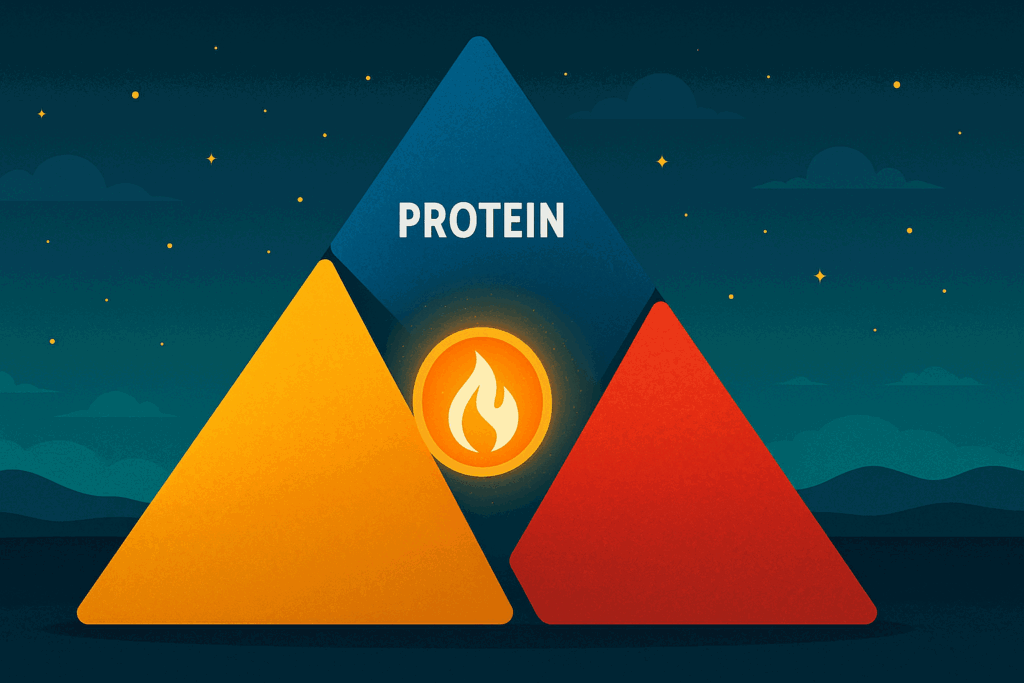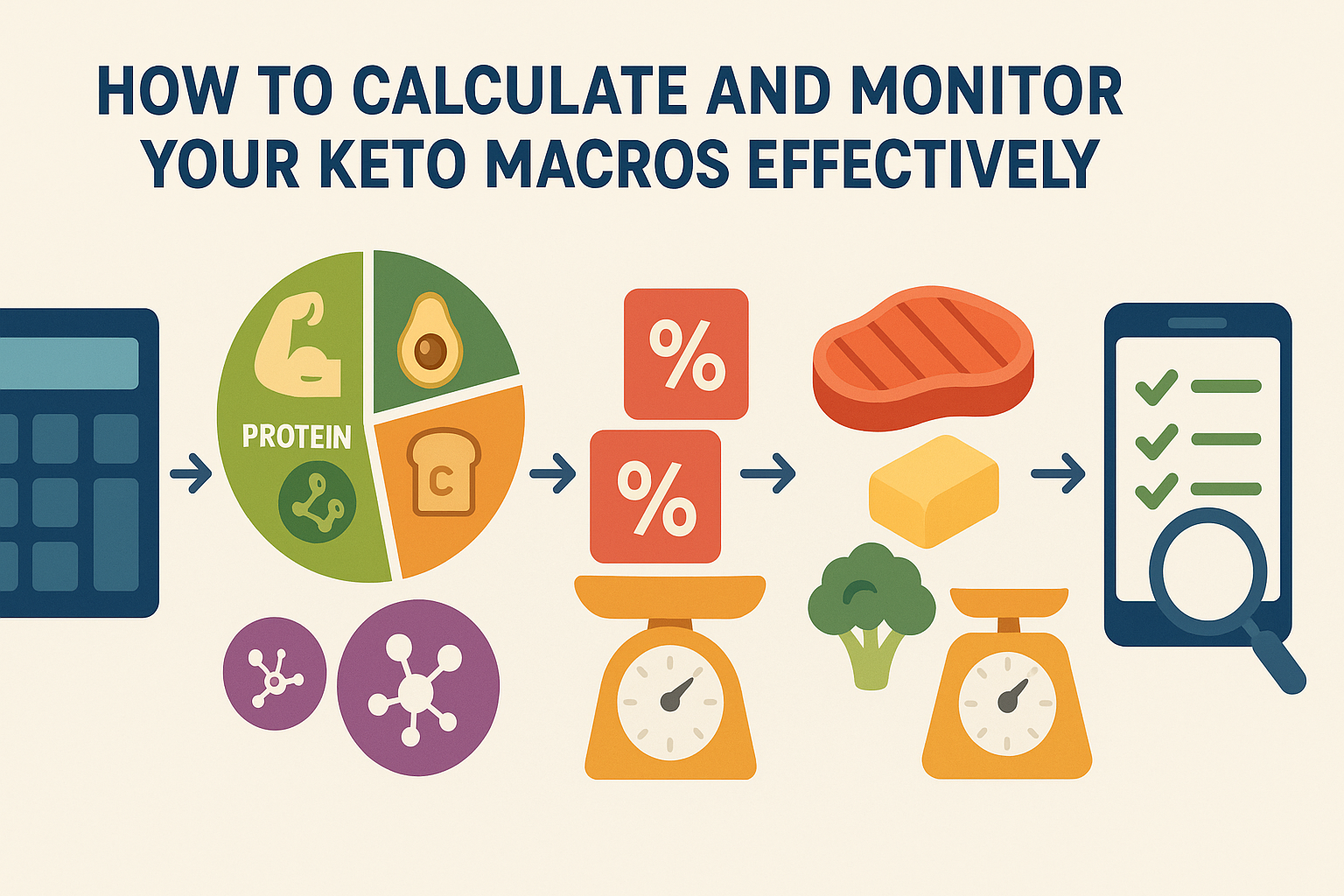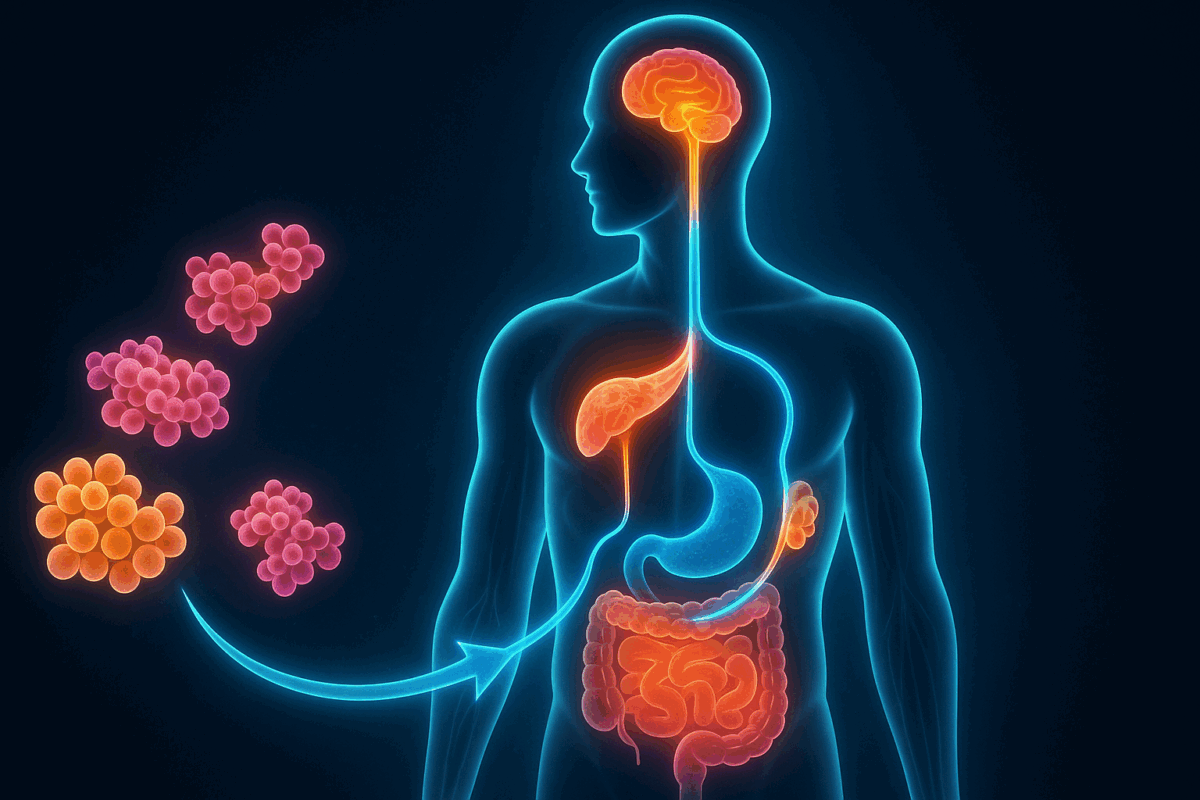Navigating the complexities of a ketogenic lifestyle can be daunting, especially for those looking to emphasize protein intake. One of the most pivotal aspects of sustaining a successful ketogenic diet is understanding and optimizing your keto ratio. The keto ratio, a critical concept that balances fat, protein, and carbohydrate intake, serves as the foundation for maintaining nutritional ketosis. Without a proper grasp of this ratio, especially when emphasizing high-protein goals, many individuals either stall in their progress or inadvertently disrupt ketosis altogether.
You may also like : The Ultimate Guide to Choosing a High Protein Diet Name That Fits Your Goals

Understanding the Keto Ratio: Foundation of Nutritional Ketosis
The keto ratio typically refers to the proportion of macronutrients consumed in a ketogenic diet. In classical ketogenic approaches, the macronutrient breakdown often follows a 4:1 or 3:1 fat-to-carbohydrate-plus-protein ratio, prioritizing fats to maintain ketone production. However, for those aiming to increase protein intake, such as athletes or individuals focusing on muscle preservation, the traditional model requires careful adjustment.
Balancing protein within the context of a low-carbohydrate framework demands precision. Excessive protein can lead to gluconeogenesis, where the body converts protein into glucose, potentially disrupting ketosis. On the other hand, inadequate protein may result in muscle loss and poor metabolic function. This is where figuring macros for keto diet goals becomes essential. By understanding how each macronutrient impacts energy production and hormonal balance, you can tailor your intake to support both fat adaptation and muscle maintenance.
Moreover, the keto macro ratio isn’t static; it evolves based on individual goals, activity levels, and metabolic responses. A high-protein keto approach typically shifts the traditional balance, often landing somewhere around 60-65% fat, 30-35% protein, and 5-10% carbohydrates. These figures provide a framework, but the exact distribution should be fine-tuned through experimentation and physiological feedback.

Keto Ratio Adjustments for High-Protein Goals
Shifting toward a high-protein ketogenic diet necessitates recalibrating the conventional keto ratio. While fat remains the primary fuel source, increasing protein changes the metabolic dynamics significantly. Protein contributes to satiety, supports muscle repair, and fuels critical enzymatic functions, making it indispensable for those with athletic or body composition aspirations.
Achieving the ideal keto macro ratio in this context involves carefully reducing fat intake to make room for elevated protein without increasing overall caloric consumption. This balancing act underscores the importance of tracking not only grams but also the caloric density of macronutrients. Since fat provides 9 calories per gram and protein 4, the energetic impact of each macronutrient must be accounted for when shifting ratios.
Low carb diet macros with elevated protein also influence how your body manages ketone production. While fat is the substrate for ketogenesis, the presence of sufficient protein helps preserve lean mass, which is especially important during caloric deficits. Therefore, optimizing macros for keto diet goals with a high-protein focus often means gradually increasing protein intake while monitoring blood ketone levels and adjusting fats downward incrementally.
This strategic approach helps maintain a state of ketosis without compromising the anabolic or metabolic benefits that higher protein intake can offer. It also emphasizes the need to monitor individual responses, as some people tolerate higher protein better than others in terms of remaining in ketosis.
Why One Keto Ratio Doesn’t Fit All: Personalizing Your Approach
Every body responds differently to dietary changes, which is why a one-size-fits-all keto ratio can be misleading. Factors such as age, sex, hormonal profile, insulin sensitivity, and physical activity levels all influence how macronutrients are metabolized. For instance, highly active individuals may require more protein to support recovery and performance, whereas sedentary individuals might need a more traditional ratio to avoid protein-induced glucose spikes.
Figuring macros for keto diet goals thus requires not only nutritional knowledge but also self-awareness and a willingness to experiment. Tools such as blood ketone meters, body composition tracking, and metabolic rate calculators can help inform your choices. These insights allow for precise macro manipulation, ensuring that your high-protein goals don’t inadvertently interfere with ketosis.
Moreover, individuals with specific health conditions, such as type 2 diabetes or hypothyroidism, may need to tweak their keto ratio to better align with their metabolic needs. Understanding the role of each macronutrient within the context of your unique physiology can empower you to make informed decisions, rather than blindly following generic guidelines.

Mastering Low Carb Macros for Athletic Performance
Athletes and fitness enthusiasts often gravitate toward high-protein versions of the ketogenic diet to support muscle growth and recovery. However, mastering low carb macros in this setting requires a delicate balance. Too little carbohydrate and performance can suffer; too much protein and ketosis may be compromised.
To achieve an effective balance, many athletic individuals adopt a targeted or cyclical ketogenic approach. This involves strategically timing carbohydrate intake around workouts to replenish glycogen stores while maintaining an overall ketogenic framework. In this context, low carb macros become dynamic rather than fixed, shifting to accommodate training intensity and recovery needs.
Protein becomes especially important for muscle repair and hormonal signaling post-exercise. Maintaining an optimal keto macro ratio for athletes often means increasing protein to around 1.6 to 2.2 grams per kilogram of body weight, while adjusting fats and carbohydrates based on training demands. It also means being vigilant about micronutrient intake, hydration, and electrolyte balance to prevent performance dips.
Furthermore, understanding the biochemical implications of gluconeogenesis is essential. When dietary carbohydrates are low, the body turns to protein and fat to maintain blood glucose levels. Strategic planning of low carb diet macros helps ensure that this process supports, rather than hinders, physical performance and recovery.

How to Calculate and Monitor Your Keto Macros Effectively
Calculating and tracking keto macros for a high-protein approach is more than a numerical exercise; it’s a strategy rooted in self-optimization. Start by determining your total daily energy expenditure (TDEE), which considers your basal metabolic rate and activity level. From there, align your caloric intake with your goal: fat loss, maintenance, or muscle gain.
Once your caloric needs are set, distribute your macros accordingly. For a high-protein keto approach, you might begin with 30-35% of calories from protein, 60-65% from fat, and the remaining 5-10% from carbohydrates. Translate these percentages into grams using the caloric values of each macronutrient: 4 calories per gram of protein and carbohydrate, and 9 for fat.
Use tracking apps like Cronometer or MyFitnessPal to log your food and monitor progress. These tools allow for real-time adjustments and help ensure that your macros align with your goals. Additionally, testing blood ketone levels can offer immediate feedback on whether your current keto macro ratio is effective in maintaining ketosis.
Importantly, consistency is key. Macro fluctuations can disrupt ketosis and skew results, especially in the early stages. By maintaining a consistent intake and adjusting gradually based on outcomes, you can fine-tune your approach and master your personal keto ratio.

Hormonal Interactions and the High-Protein Keto Framework
Hormones play a pivotal role in determining how effectively your body adapts to a ketogenic, high-protein lifestyle. Insulin, glucagon, cortisol, leptin, and ghrelin are all influenced by the types and timing of macronutrients you consume. While ketosis naturally lowers insulin levels, introducing more protein alters this hormonal landscape.
Protein stimulates insulin to a lesser degree than carbohydrates but can still impact insulin sensitivity over time. For individuals with insulin resistance or prediabetes, this can be both a benefit and a challenge. Moderate protein intake can stabilize blood sugar levels, but excessive amounts—particularly when not spaced appropriately—might raise fasting insulin.
In contrast, glucagon, which promotes ketogenesis, is also stimulated by protein. This dual effect means that the keto macro ratio for high-protein dieters must be even more carefully balanced. Maintaining ketosis while consuming significant protein requires tight control over timing, quality, and volume.
Cortisol levels, often elevated by caloric restriction or overtraining, can interfere with muscle retention and fat loss. A high-protein intake helps mitigate muscle catabolism, but only when recovery, sleep, and stress management are prioritized. The interplay between stress hormones and your keto macro ratio cannot be overlooked if long-term progress is the goal.

Digestive Health and Enzymatic Support on High-Protein Keto
Digestive capacity becomes a key variable when protein intake is high. For individuals unaccustomed to digesting large amounts of meat or dairy, issues like bloating, constipation, and indigestion can emerge. These are not merely inconveniences; they can interfere with nutrient absorption, increase systemic inflammation, and derail progress.
Supporting digestive function through supplemental enzymes—such as proteases for protein breakdown and lipases for fat digestion—can mitigate these effects. Including fermented foods like sauerkraut or kefir (if dairy-tolerant) introduces beneficial bacteria that support gut health, which in turn influences everything from mood to immune resilience.
Hydration is also crucial. High-protein diets increase nitrogen waste, which the kidneys must filter out, raising fluid requirements. Failing to adjust water intake accordingly can strain the kidneys and lead to a buildup of waste byproducts, potentially diminishing energy and mental clarity.
Keto Ratio and Metabolic Flexibility: Enhancing Adaptability
Metabolic flexibility refers to the body’s ability to switch between fuel sources—primarily fats and carbohydrates—depending on availability. A well-formulated keto macro ratio promotes metabolic flexibility by training the body to efficiently use fat and ketones for energy. This adaptability is particularly beneficial for those on a high-protein keto plan, as it allows the body to manage intermittent protein-induced glucose without exiting ketosis.
Enhancing metabolic flexibility through a high-protein ketogenic diet requires gradual adaptation. Initially, the body may resist the shift, especially if it is accustomed to glucose metabolism. However, over time and with consistent adherence to low carb macros, the enzymatic machinery necessary for fat oxidation becomes upregulated.
This increased efficiency translates to improved energy stability, reduced cravings, and better cognitive performance. It also enables better performance during fasting periods or lower-intensity exercise, where fat becomes the predominant fuel. By aligning your keto macro ratio with your personal metabolism, you can achieve a state of nutritional ketosis that is both sustainable and metabolically advantageous.
Adaptability is also important when navigating life events that may disrupt dietary routine, such as travel or holidays. A well-adapted metabolism, supported by a balanced keto ratio, is better equipped to handle these fluctuations without significant setbacks.

Nutrient Timing: Precision Eating for High-Protein Ketogenic Goals
In the realm of high-protein keto, when you eat can be as important as what you eat. Nutrient timing becomes a strategic tool to enhance workout recovery, control appetite, and stabilize energy levels throughout the day. For instance, consuming a higher protein meal post-exercise improves muscle recovery and glycogen resynthesis, especially when paired with a small, strategic amount of carbohydrate (if following a targeted ketogenic approach).
Conversely, placing fat-dominant meals earlier in the day and protein-heavy meals closer to physical activity can optimize digestion and hormonal rhythms. This helps leverage the thermogenic effect of protein while supporting satiety and lean mass retention.
Fasting protocols like intermittent fasting (IF) or time-restricted feeding (TRF) are often synergistic with a high-protein ketogenic diet. These methods allow you to consolidate calorie intake into tighter windows, improving insulin sensitivity and promoting autophagy. However, they also compress your opportunities to hit protein targets, necessitating more dense and efficient meals.
Combining a 16:8 IF protocol with a two-meal-a-day strategy—anchored by 30-50 grams of protein per meal—can be effective for those aiming for recomposition or fat loss. These windows also enhance ketone production, especially during the fasting phase, further supporting metabolic flexibility.
Social Flexibility and Real-Life Integration of Keto Macros
One of the greatest challenges of maintaining a high-protein ketogenic diet is social integration. Business dinners, family gatherings, and vacations often present limited options. The solution lies in building a flexible keto ratio that accommodates occasional variation without losing sight of your overall goals.
This may mean adopting a more liberal keto approach during travel, using strategies like intermittent fasting to buffer caloric intake, or focusing on protein-first meals when carb control is difficult. Carrying portable high-protein keto foods—such as beef jerky, collagen bars, or hard-boiled eggs—can bridge nutritional gaps on the go.
Mentally reframing deviations as conscious choices rather than failures empowers resilience. A single meal outside your typical keto macro ratio will not derail your progress if your foundation is strong. In fact, embracing flexibility can reduce stress, improve relationships, and ultimately enhance adherence.
Troubleshooting Common Pitfalls in High-Protein Keto Diets
Despite the best planning, many individuals encounter challenges when adopting a high-protein ketogenic lifestyle. One common pitfall is underestimating the impact of protein on blood glucose. While protein is essential, consuming it in excess can lead to a drop in ketone levels due to gluconeogenesis. This makes it critical to monitor ketone levels and adjust protein intake accordingly.
Another issue arises from neglecting fat intake. In the pursuit of higher protein, some individuals reduce fat too drastically, leading to energy deficits and hormonal imbalances. The key lies in reducing fat moderately while still providing enough to fuel ketogenesis and support essential bodily functions.
Additionally, inaccurate tracking can sabotage efforts. Misjudging portion sizes or overlooking hidden carbs can skew your low carb macros and impair results. Utilizing digital scales, detailed food labels, and precise tracking tools can help prevent these missteps.
Hydration and electrolyte imbalance is another frequently overlooked factor. A ketogenic diet’s diuretic effect can lead to increased excretion of sodium, potassium, and magnesium. Failing to replenish these electrolytes may result in fatigue, cramping, and diminished performance. Ensuring adequate intake through food or supplementation helps support overall well-being and adherence.
Finally, mental rigidity around macros can be counterproductive. Flexibility, within reason, allows for long-term sustainability. Occasional deviations or social meals should be viewed as part of a balanced lifestyle rather than failures.
Refeeds and Carb Cycling: Strategic Deviations for Long-Term Progress
Even within a high-protein ketogenic framework, strategic inclusion of carbohydrates through refeeds or carb cycling can offer physiological and psychological benefits. These approaches are not a departure from keto principles but rather enhancements that acknowledge the body’s adaptive mechanisms.
Periodic carb refeeds can help restore leptin levels, which decline during prolonged caloric restriction. Leptin governs appetite, metabolism, and thyroid function, making its regulation essential for preventing metabolic slowdown. A 24-hour refeed with clean, complex carbs such as sweet potatoes, quinoa (if tolerated), or squash can reset hormonal signals and improve training intensity.
Carb cycling involves designating specific days of higher and lower carbohydrate intake, often tied to training volume. On heavy workout days, increasing carbs slightly while lowering fat allows for glycogen replenishment without completely exiting ketosis. This form of dietary periodization enhances performance, supports lean muscle gain, and reduces the mental rigidity associated with strict keto adherence.
To maintain metabolic efficiency, these strategies must be carefully monitored using ketone testing, biofeedback, and body composition metrics. Overuse of carb cycling can lead to insulin resistance or stalling, but when implemented judiciously, it promotes resilience and long-term adherence.
Advanced Testing and Biofeedback for Precision Tuning
Beyond blood ketone strips and food logs, advanced tools can offer deeper insight into how your body is responding to your current keto ratio. Continuous glucose monitors (CGMs) provide real-time data on how meals affect blood sugar, allowing you to adjust protein and fat intake accordingly.
Resting metabolic rate (RMR) assessments help determine how your caloric needs shift over time, especially as you lose weight or gain muscle. These shifts should prompt reevaluation of your macros to ensure continued progress and nutritional adequacy.
Blood panels measuring insulin, leptin, thyroid hormones, and micronutrient levels can offer a comprehensive snapshot of internal health. Regular testing every 3–6 months ensures that your high-protein keto approach remains not just effective, but safe and sustainable.
Subjective metrics such as mood, sleep quality, libido, and menstrual regularity (in women) also provide invaluable information. They signal whether your body is thriving or merely coping, and they should always be considered alongside quantitative data when making dietary adjustments.
Long-Term Sustainability and the Evolving Nature of Keto Ratios
Long-term adherence to a ketogenic lifestyle, particularly one that prioritizes protein, requires a sustainable and evolving approach. What works in the early stages may not be optimal as your body composition, goals, or metabolism changes. Regular reassessment of your keto macro ratio ensures continued alignment with your needs.
As you progress, consider cycling macronutrient ratios to support hormonal health and metabolic resilience. Some individuals benefit from periodic carb refeeds, while others thrive on a consistent intake. The key is to remain attuned to your body’s signals and make data-informed decisions.
Lifelong sustainability also hinges on dietary variety and nutrient density. A monotonous diet can lead to deficiencies and reduced enjoyment. Incorporate a broad spectrum of protein sources, healthy fats, and low-glycemic vegetables to support both health and adherence.
Psychological factors play a significant role as well. Dietary rigidity can lead to burnout, whereas a mindset focused on flexibility and self-compassion fosters resilience. Viewing your keto journey as a lifestyle rather than a temporary fix helps embed habits that support lasting success.
Community support, ongoing education, and periodic consultation with nutrition professionals can also enhance long-term outcomes. As new research emerges, staying informed allows you to refine your approach and maintain optimal health.
Frequently Asked Questions About Mastering the Keto Ratio and Macros
1. How can stress levels influence your keto macro ratio success?
Stress isn’t just psychological—it has direct biochemical consequences that can disrupt your keto macro ratio. Chronic stress elevates cortisol, a hormone that raises blood glucose levels, potentially pushing your body out of ketosis even when your macros for keto diet are well-balanced. Many individuals following strict low carb diet macros find themselves frustrated when their weight plateaus despite compliance. In these cases, stress may be undermining progress by fueling low-grade inflammation and reducing insulin sensitivity. Incorporating daily mindfulness, restorative sleep, and adaptogens like ashwagandha may optimize your body’s hormonal balance and support sustained ketosis.
2. Is the standard keto ratio effective for endurance athletes, or does it require customization?
Endurance athletes often require a modified keto ratio to sustain performance while preserving fat-adapted metabolism. While the classic ratio of 70% fat, 25% protein, and 5% carbs works for many, athletes may need to increase protein slightly or use targeted carbs around workouts. When figuring macros for keto diet in an athletic context, nutrient timing becomes critical—particularly for replenishing muscle glycogen without compromising overall ketosis. Customizing low carb macros to reflect training intensity and metabolic flexibility allows endurance athletes to remain in nutritional ketosis while enhancing energy output. Precision tracking using wearables or continuous glucose monitors can help fine-tune this balance.
3. What are the long-term neurological benefits of optimizing keto macros?
Keto isn’t just about weight management—it has growing applications in neuroprotection and cognitive longevity. Optimizing your keto macros can support brain health by stabilizing blood sugar, reducing neuroinflammation, and enhancing mitochondrial function. Clinical research suggests that consistent adherence to the right macros for keto diet may slow cognitive decline in populations at risk for Alzheimer’s and other neurodegenerative conditions. Beta-hydroxybutyrate, a ketone body, serves as a clean energy source for neurons, supporting clarity and resilience. Over time, a well-calibrated keto macro ratio may even enhance mood stability and memory retention.
4. How can cultural dietary patterns affect the success of your low carb macros?
Cultural cuisine plays a major role in determining whether a keto approach is sustainable long-term. Many traditional diets—such as Mediterranean or Asian cuisines—are rich in rice, legumes, and fruits, which complicate strict low carb macros adherence. However, culturally sensitive adjustments like replacing rice with cauliflower alternatives or using coconut-based fats in Asian cooking can help preserve flavor without compromising your keto ratio. When figuring macros for keto diet in a culturally specific context, focusing on fat-rich whole foods within traditional frameworks can improve compliance and satisfaction. Celebrating cultural identity while staying within your keto macro ratio promotes long-term lifestyle adherence.
5. How do menopausal hormone changes impact keto macro ratio adjustments?
Menopause introduces hormonal shifts that affect insulin sensitivity, fat distribution, and lean muscle retention—all of which influence your ideal keto macro ratio. Declining estrogen levels can lead to increased central adiposity and reduced metabolic rate, which means your macros for keto diet may need recalibration. Women in perimenopause or menopause often benefit from a slight increase in protein within their low carb diet macros to preserve muscle mass and satiety. Additionally, strategic fasting, magnesium intake, and phytoestrogens can help regulate hormonal imbalances while maintaining ketosis. Monitoring symptoms alongside biometrics provides a personalized framework for macro adjustment.
6. Why do some people struggle with figuring macros for keto diet even with tracking apps?
Despite the widespread use of tracking apps, many individuals still struggle with figuring macros for keto diet due to inaccurate logging, label misinterpretations, or lack of awareness around hidden carbs. Many foods marketed as “keto-friendly” still contain sneaky starches or sugar alcohols that skew your keto macro ratio without obvious signs. Additionally, not everyone weighs food or accounts for cooking methods that alter macronutrient content. Advanced users benefit from periodically auditing their intake using food scales and lab-tested databases to ensure their keto macros align with goals. Understanding the qualitative side of food—not just quantitative—often bridges the gap between effort and results.
7. Can your gut microbiome influence how effectively you respond to a keto ratio?
Absolutely. Your gut microbiome plays a pivotal role in how your body digests fats, processes fiber, and maintains inflammatory balance—all of which impact your response to a keto ratio. Individuals with dysbiosis may struggle to extract nutrients efficiently, resulting in sluggish adaptation to low carb macros. Incorporating fermented foods, prebiotic fibers from leafy greens, and intermittent probiotic supplementation can optimize gut health to support keto compliance. Emerging research even suggests that unique microbial fingerprints may influence how different people metabolize macros for keto diet. Gut testing and dietary modulation may soon become mainstream tools for personalizing keto plans.
8. How should low carb diet macros be adjusted during periods of reduced activity or injury?
Periods of inactivity or recovery often call for a reevaluation of your low carb diet macros to prevent muscle loss and metabolic slowdown. With reduced energy expenditure, your calorie intake should decrease, but your protein percentage may need to increase within your keto macro ratio to preserve lean tissue. Figuring macros for keto diet during injury recovery involves prioritizing anti-inflammatory fats (like omega-3s), collagen-rich proteins, and avoiding sugar to expedite healing. Reducing total fat slightly while maintaining ketosis can support a healthy energy balance without fat gain. Customized macronutrient shifts during downtime can also aid psychological well-being by preserving progress.
9. How do exogenous ketones impact the effectiveness of your keto macros?
Exogenous ketones are often marketed as shortcuts to ketosis, but they can blur your body’s natural feedback signals and mislead macro planning. While they may elevate blood ketone levels temporarily, they don’t necessarily reflect true fat-adaptation or metabolic flexibility. Relying on them without aligning your keto macro ratio can hinder endogenous ketone production. When used strategically—such as during travel, high stress, or transition phases—they can support energy, but should never replace a consistent macros for keto diet strategy. Understanding their limitations helps prevent overdependence and supports sustainable metabolic goals.
10. How will advancements in nutritional genomics shape the future of customizing keto ratio?
Nutritional genomics—the study of how genes influence nutrient metabolism—is poised to revolutionize keto diet personalization. Certain gene variants affect how you process saturated fats, respond to low carb macros, or regulate blood sugar. Future tools may allow real-time syncing of genetic data with macro-tracking platforms to dynamically adjust your keto macro ratio. For example, someone with a polymorphism in the APOE gene may need to reduce saturated fats while increasing monounsaturated options within their keto macros. As research matures, figuring macros for keto diet may evolve into a highly personalized process rooted in your DNA, lifestyle, and real-time biomarkers.
Conclusion: Achieving High-Protein Success Through Keto Ratio Mastery
Mastering your keto ratio is a dynamic process that demands both precision and adaptability. For those pursuing high-protein success, the journey involves more than simply cutting carbs; it requires a nuanced understanding of how fat, protein, and carbohydrates interact to influence ketosis, metabolic health, and body composition. By honing your skills in figuring macros for keto diet goals, aligning your keto macro ratio with your lifestyle, and staying attentive to low carb diet macros, you can unlock the full potential of a high-protein ketogenic strategy.
Success in this realm is not a matter of rigid adherence to static numbers but rather a reflection of how well you listen to your body, interpret the data, and make informed adjustments. Whether you’re an athlete seeking performance gains or someone focused on long-term health, tailoring your macros for keto diet alignment empowers you to thrive. Embrace the process, invest in your knowledge, and evolve your approach as your goals and needs shift. Through mastery of your personal keto ratio, high-protein success becomes not just achievable, but sustainable.
Further Reading:
Diet options for macronutrient goals
Keto Macros for Women – Perfecting Ratios for Fat Loss and Energy





